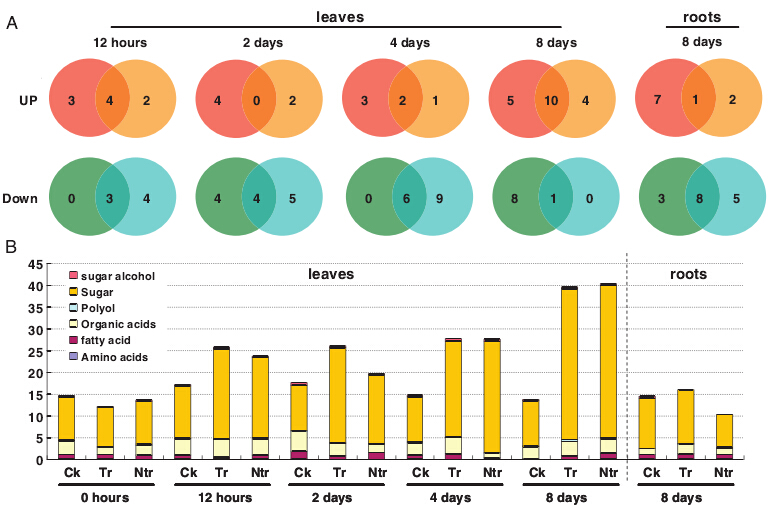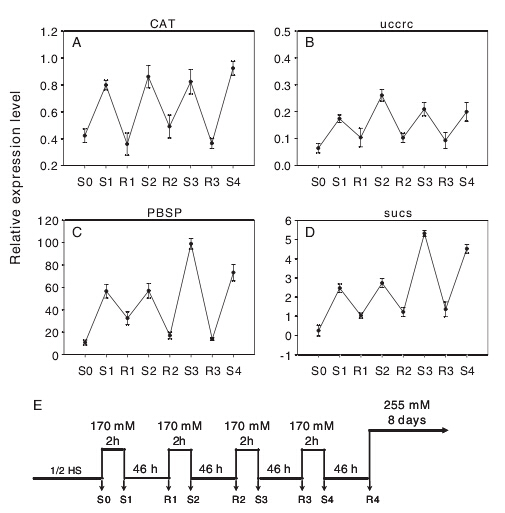Stress Memory Induces Transcriptional and Metabolic Changes of Perennial Ryegrass in Response to Salt Stress
2015-06-09
A recurring pre-exposure to biotic or abiotic stress may produce appropriate alarm signal and faster reactions memorized by plants and recognized in subsequent stress, which may be stable and carried forward as a form of ‘stress memory’. The stress memory could increase the systemic immunity or induce stronger responses to subsequent stress treatments in plants.
As an important forage grass and cool-season turfgrass, Perennial ryegrass (Lolium perenne L.) is known for its rapid establishment rate and good wear tolerance, which is extensively utilized C3 turfgrass sown in the United States, New Zealand, Japan, Australia and most of European countries. In contrast to other plants exposed to salinity whose regulatory mechanisms have been well addressed, how salinity-induced toxicology in turfgrass, particularly expression of candidate genes in perennial ryegrass, has not been understood well.
Prof. FU Jinmin and assistant Prof. HU Tao from Wuhan Botanical Garden initially characterized the stress memory induced by multiple salt stress/recovery treatments in a relatively short time with a relatively low NaCl concentration in cool-season turfgrass.
During four times repetitive pre-exposures to multiple 2 h NaCl stress and 46 h recovery treatments, perennial ryegrass had similar relative transpiration rate (RTr) at the first stress (S1) and the second stress (S2), but achieved higher RTr at the third stress phase (S3) and the fourth stress(S4). Meanwhile, after 46 h recovery (annotated as R1, R2, R3, and R4), plants had fully recovered to the initial RTr after each 46 h recovery.
The transcriptional memory demonstrated by elevated transcript levels of a subset of the trainable genes (PBSP and sucs) was activated early in the multiple training stages and this memory could persist for 4 days under subsequent prolonged salt stress. The stress tolerance induced by stress memory was mainly due to activated transcriptional memory, accumulation of sugar and sugar alcohol and inhibition of reactive oxygen species (ROS) in trainable plants.
These findings involved in stress memory salinity adaptation response mechanisms supply one novel strategy for a cool-season turfgrass’s response to the salinity environment.
Results were published in Physiologia Plantarum online entitled “Stress memory induced transcriptional and metabolic changes of perennial ryegrass (Lolium perenne) in esponse to salt stress”. This work was supported by the National Natural Science Foundation of China, China-Africa Center for Research and Education, CAS.

Global view of the distinct and common metabolite targets in perennial ryegrass plants in response to salt stress (Image by HU Tao)

Transcript levels of non-trainable and trainable genes in perennial ryegrass before and after single or multiple salt stresses (Image by HU Tao)

A proposed model for stress memory induced salinity tolerance in perennial ryegrass (Image by HU Tao)